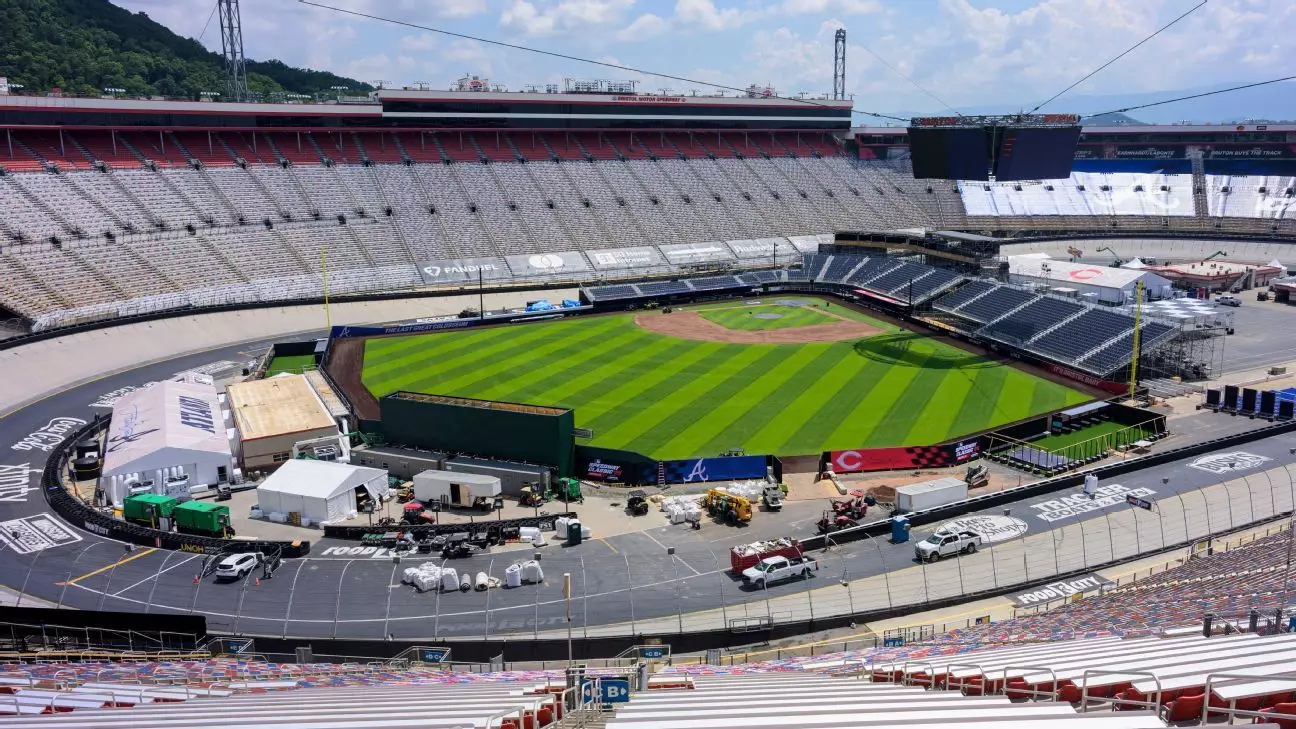Bristol Motor Speedway, long celebrated for its roaring race cars and thunderous crowds, has once again demonstrated its unique ability to adapt and redefine its identity. The recent transformation from a legendary NASCAR venue into a temporary home for Major League Baseball represents more than just logistical flexibility; it embodies a visionary spirit willing to embrace diverse sporting events. While many might view such a drastic change as disruptive, it underscores a remarkable resilience and commitment to maximizing the venue’s potential. The sheer scale of this project highlights the brisk pace of modern sports infrastructure, which demands not just endurance but ingenuity.
The process involved a meticulous overhaul of the infield, which had to be reconfigured from a racing surface to a baseball diamond. This transition required 17,500 tons of gravel and 340 tons of Pennsylvania clay—both essential to creating an authentic playing field that could meet MLB standards. The construction included detailed work on clubhouses, batting cages, and broadcast booths—elements that typically belong solely to baseball venues. It’s a testament to human adaptability that an arena known primarily for racing could seamlessly host a major league baseball game, setting a record attendance of over 91,000 fans. This crossover effort not only challenges conventional boundaries but also puts Bristol on a unique map: a multi-sport monument capable of hosting high-profile events outside its traditional realm.
Logistics and Challenges: Moving Mountains in Record Time
The switchback nature of the project showcases the logistical prowess and planning prowess of the organizers. Rapid disassembly of baseball-specific setups, rapid reinstallation of racing infrastructure, and the meticulous attention to detail exemplify tight operational discipline. The engineers and crews involved had to work tirelessly—sometimes through the night—to ensure that each component was dismantled or rebuilt on schedule. This process involved not only physical labor but also strategic decisions about resource allocation; for instance, leftover gravel was repurposed to aid in Bristol’s recovery efforts after Hurricane Helene. Such thoughtful recycling highlights a broader social responsibility embedded in the project—an effort to give back to the community in times of need.
Furthermore, the timeline was tight, with a goal to complete the transformation by September 7—just days before NASCAR’s return race. While some might question the feasibility of such a compressed schedule, the organizers’ confidence reflects a mastery of project management. Despite the risks, this ambitious turnaround underscores an unwavering belief in the venue’s versatility, showcasing Bristol’s reputation as a “challenge-loving” hub that refuses to be pigeonholed into one identity. Each obstacle was met with innovative solutions, demonstrating that resilience isn’t just about endurance but also about creative problem-solving.
The Future of Bristol: Beyond Racing and Baseball
What makes Bristol’s recent ventures truly inspiring is not just their coordination but their implications for the future landscape of multi-use sports venues. The success of hosting a record-breaking MLB game proves that unconventional events can thrive at venues once thought unsuitable. The reported interest from the NHL further cements Bristol’s emerging role as a versatile playground for diverse sports franchises. It becomes clear that the racetrack’s capacity for adaptation offers a blueprint for other major venues seeking to capitalize on an increasingly dynamic entertainment industry.
Yet, skepticism remains a natural response to such grand transformations. Critics might argue that these disruptions detract from the venue’s identity or strain its resources. However, Bristol’s example suggests that embracing flexibility and innovation can unlock new revenue streams, foster community engagement, and elevate the city’s profile on the national sports stage. Instead of resisting change, Bristol demonstrates that evolution allows a venue’s legacy to grow richer, more complex, and ultimately more resilient.
Beyond the logistical marvels and community benefits, Bristol’s latest chapter symbolizes a broader cultural shift—a recognition that sports and entertainment are increasingly interconnected, fostering a sense of unity and shared purpose. This willingness to reinvent and challenge norms is perhaps the most powerful lesson of all: resilience and adaptability are not just survival skills but catalysts for extraordinary achievement. Bristol’s rapid transformation serves as a compelling case study for venues worldwide, proving that greatness often lies in the unexpected and the uncharted.

